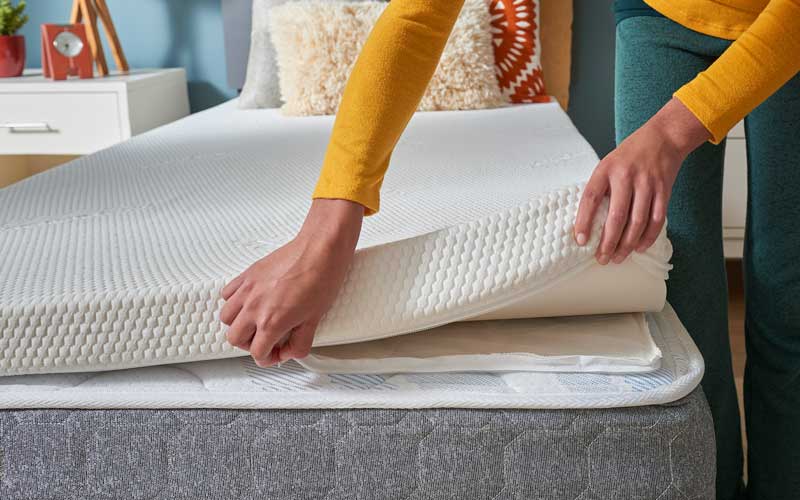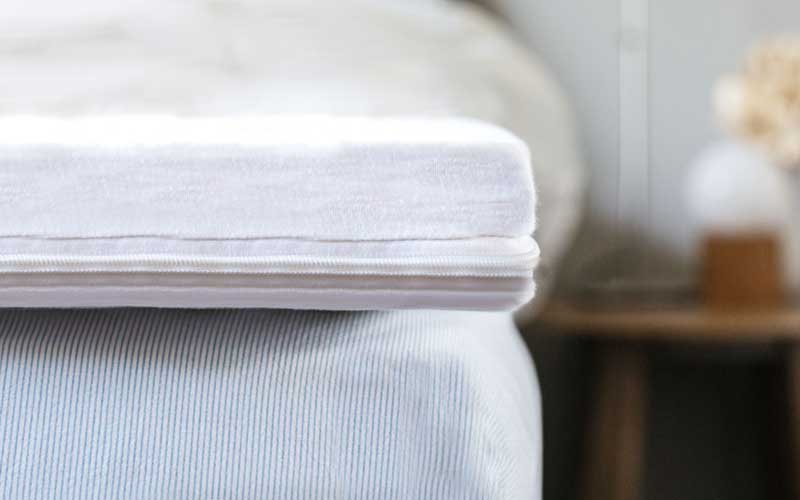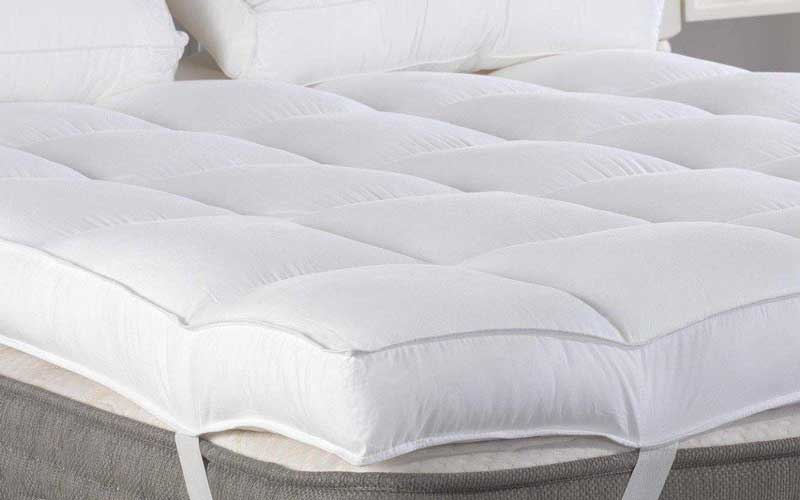As the name suggests, a mattress topper sits on top of your regular mattress to add extra cushioning and support. It can be made from various materials—including latex, memory foam, down, and in a range of thicknesses and densities.
Yes, a good mattress should be your number one priority when it comes to sleeping comfortably. Still, a topper is what will make your experience restful while giving you the option to adjust your bed’s firmness easily.
Get an additional comfort level by adding a topper that provides the support you need and gives the softness you want. This is definitely a small investment with big returns when it comes to catching a good night’s sleep. So let’s take a look at the different types of mattress toppers and help you pick the one that works best for you!
What types of mattress toppers are there?
Today you can find a mattress topper in various materials, styles, and qualities, which is why it’s essential to understand what you’re hoping to gain from it. Here is what you need to know about each type of mattress topper:

Memory foam
First, we will talk about memory foam toppers as they cradle or hug the body. Keep in mind that memory foam is temperature-responsive. What that means is that it might feel firmer in a colder room or softer in warmer surroundings. When you sink into the foam, it retains and radiates your body heat, which can be uncomfortable sometimes if you’re a hot sleeper. Opting for one infused with a gel-infused option will sorb additional heat and have a cooling effect.
- Pros: excellent motion isolation; provides a cloud-like feeling; can make a firm mattress feel considerably softer
- Cons: can retain heat; possible difficulties to turn over or shift in bed; pricier than other types; can come with a synthetic smell
Latex
Next on our list are latex toppers, which is similar to memory foam. However, your body doesn’t sink, but it rests on the surface. We recommend this option for people who want the bounciness of foam without the hugging sensation. Also, many latex options allow you to choose the amount of padding depending on your sleeping position, which can make them last longer.
- Pros: durable with a longer lifespan; absorbs movement from your partner; antimicrobial and non-allergenic
- Cons: expensive; has a distinctive odour when new

Down & Feather
If you are a fan of a more traditional feel, down or down alternatives is the way to go. Premium options as Hungarian goose down are an excellent choice, but they can be quite pricy.
Then, we have feathers that feel similar to comforters because they are sewn with baffle boxes, which keep the feathers from shifting. They feel luxurious and tend to feel crunchier than other types. Feather, in general, can poke through and often can’t be washed.
Feathers and down aren’t always humanely taken from birds. Therefore, to ensure you’re buying a product with down that has been responsibly farmed, you’ll need to check the manufacturer or retailer and find out what their policy is.
- Pros: feather is cheaper than memory foam or latex; doesn’t retain as much heat
- Cons: compresses over time, requires periodic shaking to fluff back up; non-hypoallergenic; feather quills poke through the fabric
Microfibre & Hollowfibre
Microfibre is a synthetic material used in pillows, duvets and mattress toppers as it is the most affordable option. So, if you are on a tight budget, this is a choice to consider.
Fibre-filled products don’t provide nearly as much cushioning as memory foam or latex, which is why we don’t recommend them for people with neck, shoulder, hip or back problems. Also, they aren’t as breathable as down and will flatten quicker.
However, the synthetic fibres make it hypoallergenic, which is a plus for allergy sufferers. Some items are even sold as ‘anti-allergy, meaning they’ve been treated with a chemical to ward off allergens such as dust mites and pollen.
- Pros: cheapest choice; no chemical odour; anti-allergy options
- Cons: not as breathable; becomes lumpy over time and flattens; the shortest lifespan of all the topper types

Wool
We can safely say that wool toppers are the most breathable and best at temperature regulation. However, they don’t provide as much cushioning and tend to flatten. They have a positive, that can be the turning point for many, they can fit in a standard washer and dryer, and others aren’t even machine washable.
- Pros: soft; cool in summer, warm in winter; durable; naturally antimicrobial and hypoallergenic (for most)
- Cons: expensive; not easy to find
Bottom line
All toppers are designed for different purposes, so it’s crucial to choose the right one for your specific needs. Depending on each person’s unique preferences, some can dramatically change the feel of a regular mattress to make it firmer or softer or even add targeted support.
If a mattress is already old, a mattress topper can temporarily help smooth over the lumps until you can replace it. It can also help ease painful joints or assist in recovery from injuries.
Most options will extend the life expectancy of a mattress by giving it an added layer of protection. Choosing the right one is important when wanting to achieve a night of good quality sleep and support your body well whilst assisting in maintaining a neutral spine during sleep. You can even see what we think are the best mattress toppers in this guide.
We hope we were able to answer the how and why when it comes down to ‘Types of Mattress Toppers?’, and now it’s our turn to hear from you if any questions regarding the subject were left unanswered. If you want to share some information, we would gladly hear about it in the comments below.

